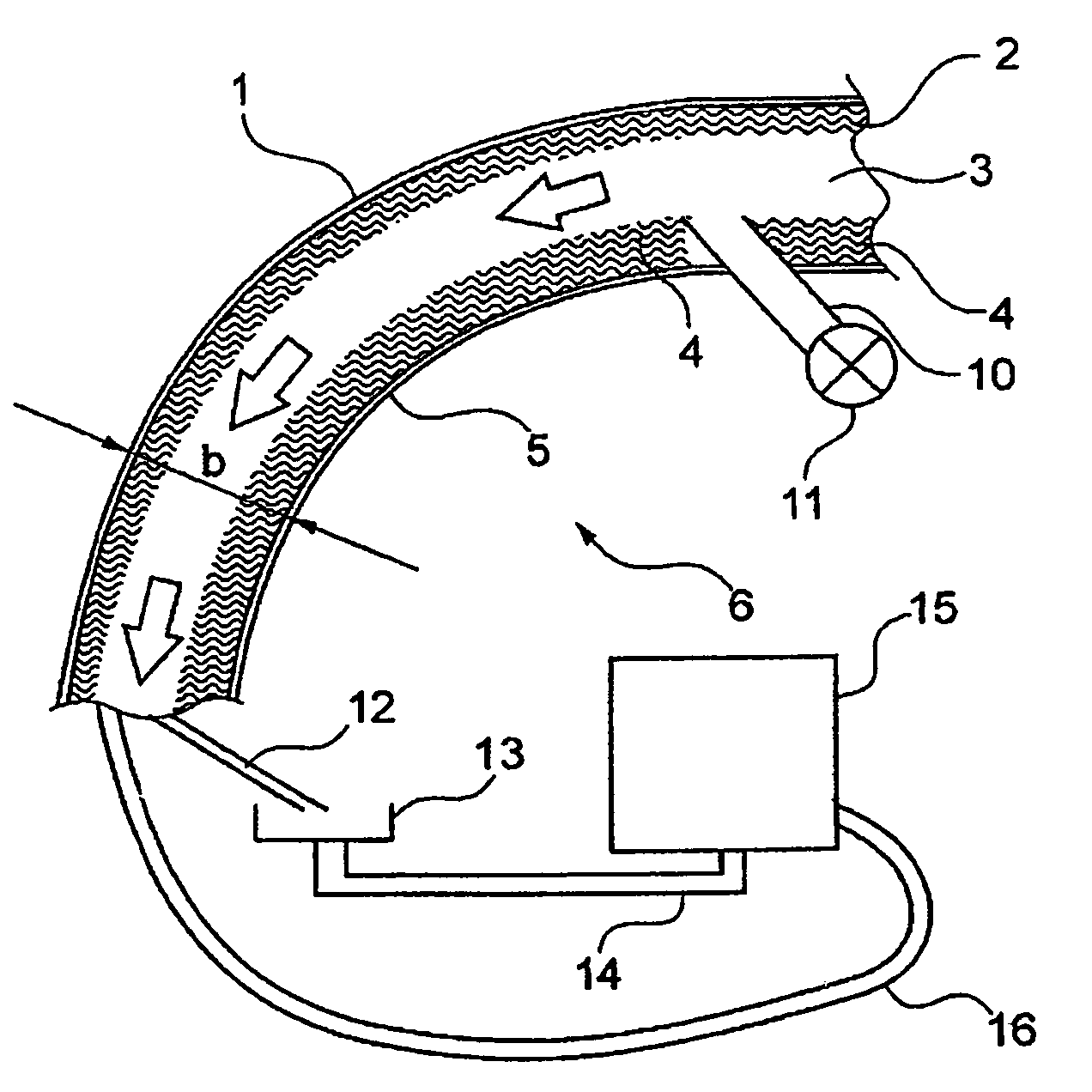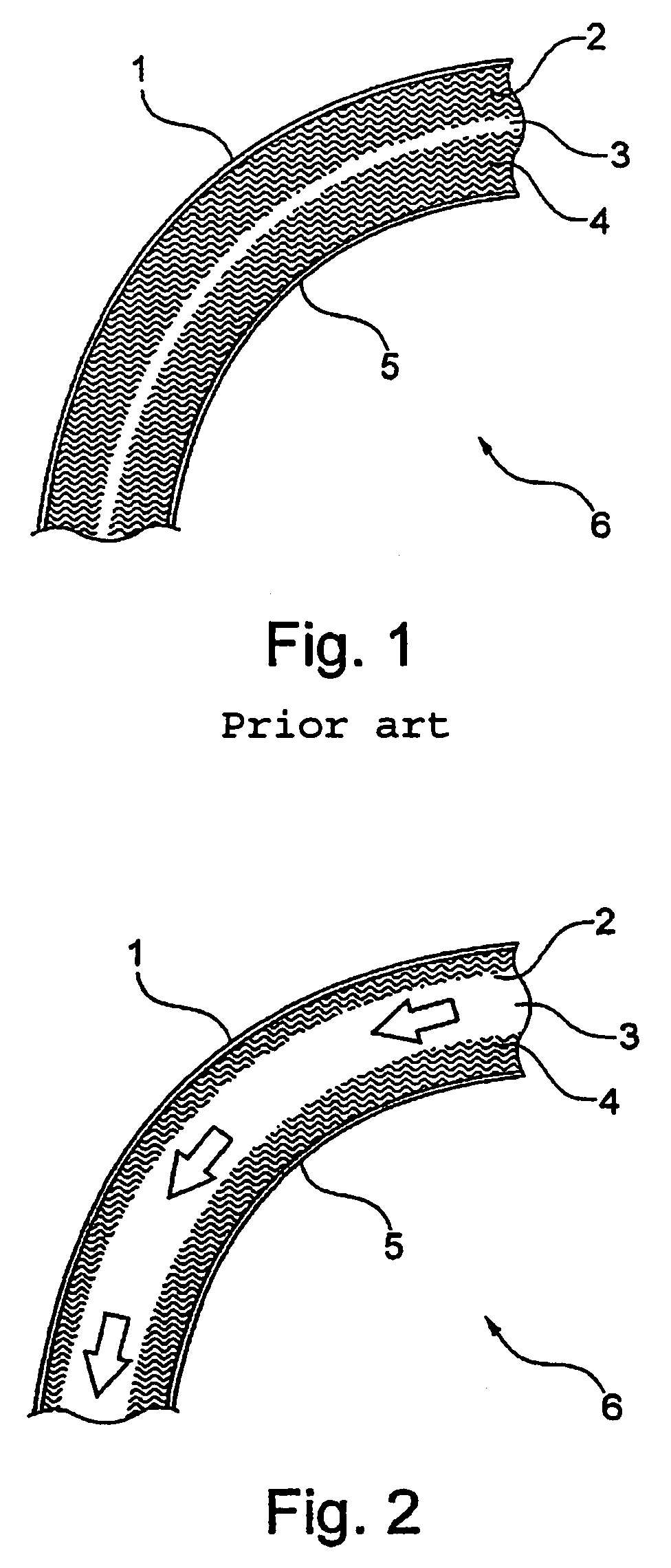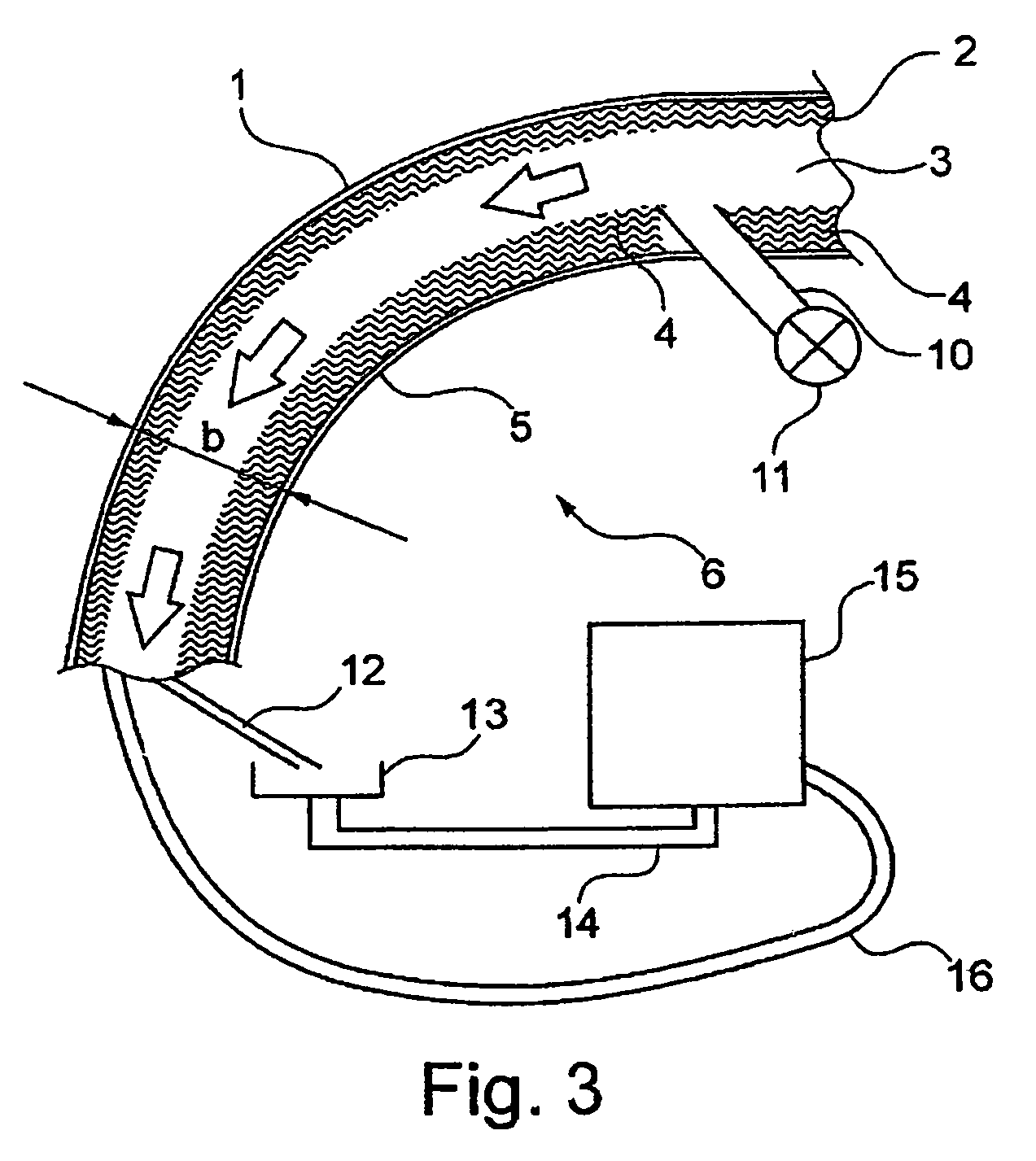Method for isolating a cabin wall of an aircraft or for cooling or heating of cabin air and a cabin wall suitable therefore
a technology for cabin walls and aircraft, which is applied in the direction of fuselages, transportation and packaging, and energy-saving board measures, etc. it can solve the problems of occupying considerable space in the aircraft, and reducing the insulation effect, so as to increase the humidity of the air within the aircraft cabin, the effect of increasing the weight of the aircra
- Summary
- Abstract
- Description
- Claims
- Application Information
AI Technical Summary
Benefits of technology
Problems solved by technology
Method used
Image
Examples
Embodiment Construction
[0023]In the following drawings the same reference characters are used for identical or similar elements.
[0024]FIG. 1 shows a diagrammatic cross-section of a part of an aircraft cabin wall according to the state of the art. In this arrangement, the aircraft cabin wall 6 comprises an outer skin 1 and a sidewall panel 5. In this arrangement the insulation is provided by two materials 2 and 4 that have been applied, wherein material 2 is arranged on the outer skin 1, and material 4 is arranged on the sidewall panel 5. In this arrangement the materials 2 and 4 have low thermal conductivity. The arrangement of the insulating materials 2 and 4 can result in a gap 3. This gap varies as a result of production-related factors, or it can be absent altogether. The insulating materials 2 and 4 have to be designed such that they ensure a correspondingly good insulation between the interior region of the aircraft and the exterior region even in the worst case, in other words under the worst condi...
PUM
 Login to View More
Login to View More Abstract
Description
Claims
Application Information
 Login to View More
Login to View More - R&D
- Intellectual Property
- Life Sciences
- Materials
- Tech Scout
- Unparalleled Data Quality
- Higher Quality Content
- 60% Fewer Hallucinations
Browse by: Latest US Patents, China's latest patents, Technical Efficacy Thesaurus, Application Domain, Technology Topic, Popular Technical Reports.
© 2025 PatSnap. All rights reserved.Legal|Privacy policy|Modern Slavery Act Transparency Statement|Sitemap|About US| Contact US: help@patsnap.com



